
Air Canada Flight 143, commonly known as the Gimli Glider, was a Canadian scheduled domestic passenger flight between Montreal and Edmonton that ran out of fuel on Saturday, July 23, 1983, at an altitude of 41,000 feet (12,500 m), midway through the flight. The flight crew successfully glided the Boeing 767 to an emergency landing at a former Royal Canadian Air Force base in Gimli, Manitoba, which had been converted to a racetrack, Gimli Motorsports Park. It resulted in no serious injuries to passengers or persons on the ground, and only minor damage to the aircraft. The aircraft was repaired and remained in service until its retirement in 2008. This unusual aviation incident earned the aircraft the nickname "Gimli Glider."

The Kegworth air disaster occurred when British Midland Airways Flight 092, a Boeing 737-400, crashed onto the motorway embankment between the M1 motorway and A453 road near Kegworth, Leicestershire, England, while attempting to make an emergency landing at East Midlands Airport on 8 January 1989.

Scandinavian Airlines System Flight 751 was a regularly scheduled Scandinavian Airlines passenger flight from Stockholm, Sweden, to Warsaw, Poland, via Copenhagen, Denmark. On 27 December 1991, a McDonnell Douglas MD-81 operating the flight, registration OY-KHO, piloted by Danish Captain Stefan G. Rasmussen (44) and Swedish first officer Ulf Cedermark (34), both experienced pilots with 8,000 and 3,000 flight hours, respectively, was forced to make an emergency landing in a field near Gottröra, Sweden. Ice had collected on the wings' inner roots before takeoff, broke off, and was ingested into the engines as the aircraft became airborne on takeoff, ultimately disabling both engines. All 129 passengers and crew aboard survived.

Air China Flight 129 (CCA129/CA129) was a scheduled international passenger flight, operated by Air China, from Beijing Capital International Airport to Gimhae International Airport in Busan. On April 15, 2002, the aircraft on this route, a Boeing 767-200ER, crashed into a hill near the airport, killing 129 of the 166 people on board.
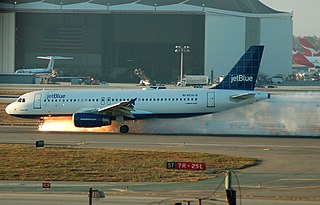
An emergency landing is a premature landing made by an aircraft in response to an emergency involving an imminent or ongoing threat to the safety and operation of the aircraft, or involving a sudden need for a passenger or crew on board to terminate the flight. It typically involves a forced diversion to the nearest or most suitable airport or airbase, or an off airport landing or ditching if the flight cannot reach an airfield. Flights under air traffic control will be given priority over all other aircraft operations upon the declaration of the emergency.

Miracle Landing is a 1990 American made-for-television drama film based on an in-flight accident aboard Aloha Airlines Flight 243 that occurred in April 1988. The Boeing 737-200 was flying from Hilo, Hawaii to Honolulu, Hawaii, when it experienced rapid decompression when a section of the fuselage was torn away. With one flight attendant blown from the cabin to her death and 65 others injured, the aircraft was able to make a successful emergency landing at Kahului Airport, on Maui.

Pilot error generally refers to an accident in which an action or decision made by the pilot was the cause or a contributing factor that led to the accident, but also includes the pilot's failure to make a correct decision or take proper action. Errors are intentional actions that fail to achieve their intended outcomes. The Chicago Convention defines the term "accident" as "an occurrence associated with the operation of an aircraft [...] in which [...] a person is fatally or seriously injured [...] except when the injuries are [...] inflicted by other persons." Hence the definition of "pilot error" does not include deliberate crashing.

British Airways Flight 009, sometimes referred to by its callsign Speedbird 9 or as the Jakarta incident, was a scheduled British Airways flight from London Heathrow to Auckland, with stops in Bombay, Kuala Lumpur, Perth, and Melbourne.

Skyjacked is a 1972 American disaster film starring Charlton Heston and Yvette Mimieux. Directed by John Guillermin, the film is based on the David Harper novel Hijacked. James Brolin lead an ensemble cast primarily playing the roles of passengers and crew aboard an airliner.
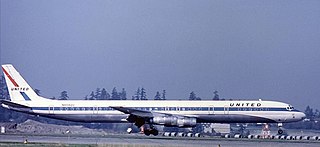
United Airlines Flight 173 was a scheduled flight from John F. Kennedy International Airport in New York City to Portland International Airport in Portland, Oregon, with a scheduled stop in Denver, Colorado. On December 28, 1978, the aircraft flying this route ran out of fuel while troubleshooting a landing gear problem and crashed in a suburban Portland neighborhood near NE 157th Avenue and East Burnside Street, killing 10 on board.

Gambell Airport is a public airport located in Gambell, a city in the Nome Census Area of the U.S. state of Alaska. The airport is owned by the state.

Britannia Airways Flight 226A was an international passenger flight from Cardiff, Wales to Girona, Spain, operated by charter airliner Britannia Airways. On 14 September 1999, the Boeing 757-204 aircraft suffered a crash landing and broke apart during a thunderstorm in Girona-Costa Brava Airport. Of the 236 passengers and nine crew on board, two were seriously injured and 41 sustained minor injuries. One of the passengers who had apparently sustained only minor injuries died five days later of unsuspected internal injuries. The aircraft involved in the crash, Boeing 757-204 registration G-BYAG, was damaged beyond economical repair and scrapped.
Robert Piché is a Canadian pilot. On August 24, 2001, he was captain of the Airbus A330 flying Air Transat Flight 236 and managed to land the aircraft safely in the Azores after it lost all power due to fuel exhaustion. As of March 2024, this remains a record glide length for a commercial aircraft in non powered flight. Piché and his co-pilot were later assigned partial responsibility for the incident.
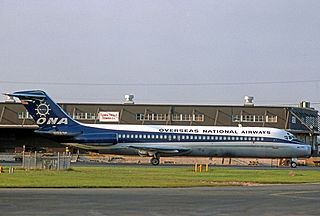
ALM Antillean Airlines Flight 980 was a flight scheduled to fly from John F. Kennedy International Airport in New York City to Princess Juliana International Airport in St. Maarten, Netherlands Antilles, on May 2, 1970. After several unsuccessful landing attempts, the aircraft's fuel was exhausted, and it made a forced water landing in the Caribbean Sea 48 km off St. Croix, with 23 fatalities and 40 survivors. The accident is one of a small number of intentional water ditchings of jet airliners.

Pan Am Flight 6 was a round-the-world airline flight that ditched in the Pacific Ocean on October 16, 1956, after two of its four engines failed. Flight 6 left Philadelphia on October 12 as a DC-6B and flew eastward to Europe and Asia on a multi-stop trip. On the evening of October 15 the flight left Honolulu on a Boeing 377 Stratocruiser Clipper named Sovereign Of The Skies. The accident was the basis for the 1958 film Crash Landing.

Aeroflot Flight 3352 was a regularly scheduled Aeroflot flight from Krasnodar to Novosibirsk, with an intermediate landing in Omsk. While landing at Omsk Airport on Thursday, 11 October 1984, the aircraft crashed into maintenance vehicles on the runway, killing 174 people on board and four on the ground. While a chain of mistakes in airport operations contributed to the accident, its major cause was an air traffic controller falling asleep on duty. As of 2022, this remains the deadliest aviation accident on Russian territory. It was also the deadliest aviation accident involving a Tupolev Tu-154 at the time until the crash of Aeroflot Flight 5143 nine months later; as of 2023, it still ranks as the second-deadliest accident involving a Tupolev Tu-154. The tragedy was kept secret for twenty years, until Komsomolskaya Pravda published an article in 2004.
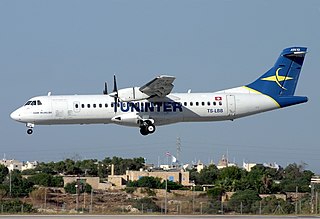
Tuninter Flight 1153 was a Tuninter Airlines international flight from Bari International Airport in Bari, Italy, to Djerba-Zarzis Airport in Djerba, Tunisia. On 6 August 2005, the Tuninter ATR 72 ditched into the Mediterranean Sea about 18 miles (29 km) from the city of Palermo. Sixteen of the 39 people on board died. The accident resulted from fuel exhaustion due to the installation of fuel quantity indicators designed for the ATR 42 in the larger ATR 72. It was also Tuninter's first fatal accident in the 14-year history of the company.

Eastern Air Lines Shuttle Flight 1320, carrying passengers from Newark to Boston, was hijacked around 7:30 p.m. on March 17, 1970, by John J. Divivo who was armed with a .38 caliber revolver. Captain Robert Wilbur Jr., 35, a former United States Air Force pilot who had been promoted to captain six months prior was confronted by Divio, who ordered him to fly east and alert him when the plane was going to run out of fuel. But something startled the suicidal hijacker, who shot Wilbur in the arms. Despite his wounds, he flew his aircraft safely to a landing while talking to air traffic control, telling them his copilot was shot and needed emergency services.
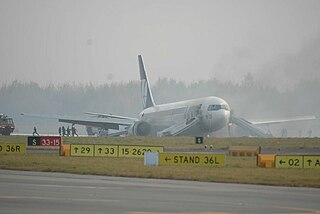
LOT Polish Airlines Flight 16 was a Boeing 767 passenger jet on a scheduled service from Newark, United States, to Warsaw, Poland, that on 1 November 2011 made a successful gear-up emergency landing at Warsaw Chopin Airport, after its landing gear failed to extend. All 231 aboard survived without serious injuries. A leak in one of the aircraft's hydraulic systems occurred shortly after takeoff, resulting in the loss of all of the hydraulic fluid supplying the primary landing gear system.
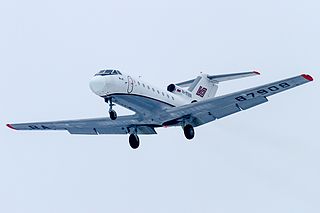
The 1994 Vanavara air disaster occurred on 26 September 1994 when a Yakovlev Yak-40, operated by Russian regional airliner Cheremshanka Airlines, crashed onto the bank of a river near Vanavara, Russia. All 24 passengers and 4 crew members died.




















